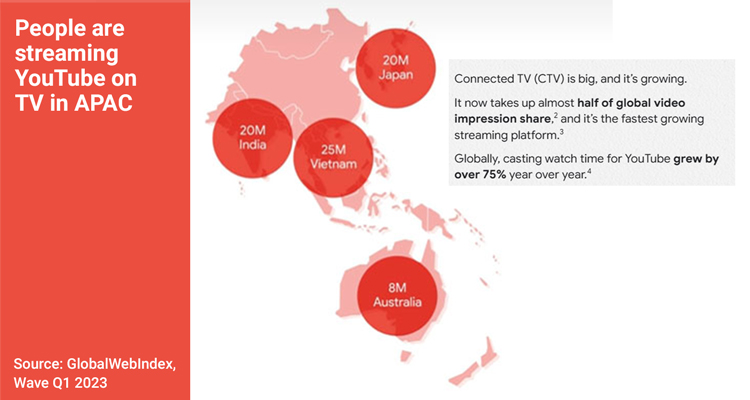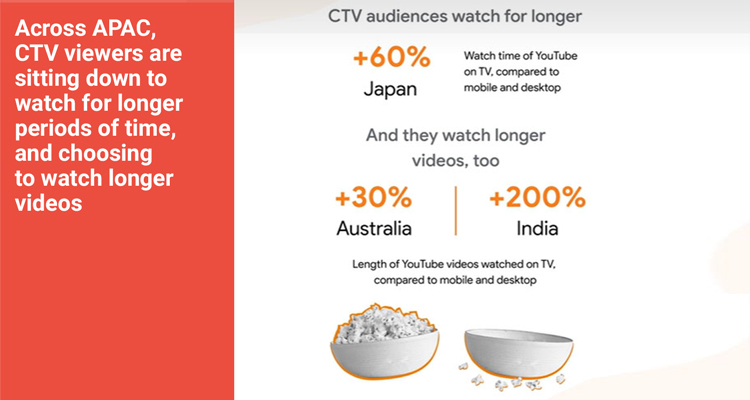In the past decade, smart devices and streaming services have rapidly replaced traditional TV, offering audiences countless entertainment options. This shift has created a monumental opportunity for advertisers to reach different audiences simultaneously through connected TV (CTV).

CTV allows advertisers to deliver highly targeted content across various platforms and devices. Unlike traditional broadcast TV, where ad placements are based on the aired content, CTV offers the precision of digital targeting, enabling media buyers to select specific audiences based on their interests and preferences.
This evolution has significantly impacted traditional TV ad spending in the Asia-Pacific (APAC) region, which has decreased markedly since 2020 and is projected to decline further. In 2024, traditional TV ad spending stands at $51.98 billion. Concurrently, nearly half of global video impression shares now come from CTV, with its market value expected to reach $113 billion within the next two years. Between 2022 and 2023, there was a 15% year-over-year increase in open programmatic ad spending in the first quarter.
Connected devices have grown to the extent that they can now fill entire living rooms with high-definition content, facilitating communal viewing through CTV. With streaming giants like Netflix and Amazon Prime Video introducing ad-supported subscriptions, the advertising opportunities are immense.

CTV not only replicates the reach of traditional TV advertising but also boasts a higher engagement rate, facilitating better media planning, optimization, and return on investment (ROI). According to a Google survey, around 37% of solo viewers and 71% of co-viewers experienced an emotional response to CTV ads. Further research indicates that 40% of APAC viewers have downloaded a mobile app after watching a CTV ad, and 57% are more likely to do so via a QR code during the ad.
For brand marketers in APAC, CTV is particularly advantageous due to the region’s high smartphone penetration. CTV’s ability to function across both mobile and smart TVs allows for contextual targeting of new and existing audiences and measurement across multiple devices.
Effective measurement is crucial for assessing an ad’s impact. Unlike traditional TV, CTV provides clear data on key metrics, such as viewership numbers, viewing duration, and engagement. This data-driven approach enables advertisers to allocate their budgets strategically, ensuring that high-quality ads reach the right audiences at optimal times.
To maximize CTV’s potential, it is essential to target the right audience with relevant content. First-party data is a critical starting point for customizing CTV advertising strategies to reach customers efficiently. Advanced technology allows advertisers to identify high-value customers and similar audiences, grouping them for targeted messaging through a single template to maintain consistency.
As third-party cookies are phased out and privacy regulations become stricter, transparency and opt-out options are increasingly important. Technologies like Crimtan’s cookieless solutions use deterministic, probabilistic, and signal data to reach broad audiences with consent, analyze first-party data, identify targeting signals, and implement retargeting tactics.
CTV represents a significant evolution, bridging traditional media with the digital age and offering marketers a powerful tool for precise, personalized campaigns. Platforms like Crimtan’s ArchiTECH provide omnichannel capabilities, integrating CTV ads with other channels for streamlined campaign management, enhanced visibility, and compliance with global legislation. This enables efficient budget utilization, prevents ad fatigue, and ensures precise targeting of existing buyers.







